INDONESIA TRIP REPORT © 2014 Callyn Yorke
SITE DESCRIPTIONS, METHODS, AND BIRD LIST for WESTERN FLORES, RINCA and KOMODO ISLANDS, INDONESIA June 23-30, 2014 © 2014 Callyn Yorke
Link to: Indonesia Journal 2014 Callyn Yorke
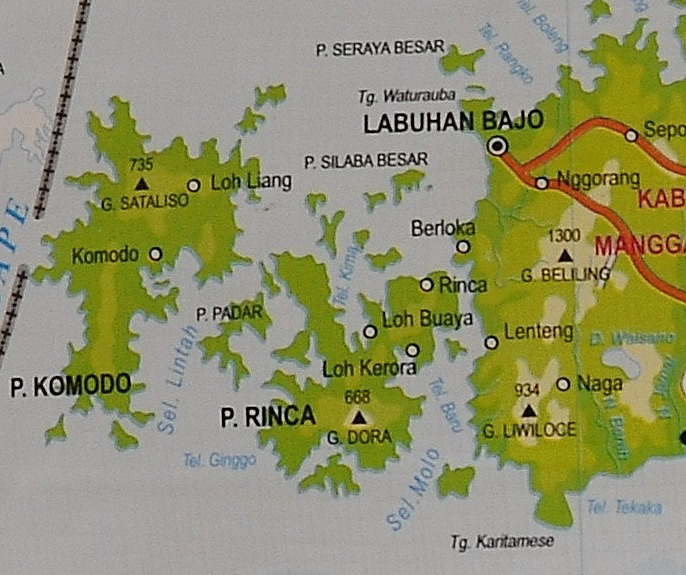
Weather: Mostly fair with some intermittent light rain June 23-24. Air Temperature: 70 to 85F; Ocean Surface Temperature 78F. Low Tide 0630-0730 hrs.
Time: 0600- 1900 hrs.
Areas Covered: 1) Labuanbajo, Western Flores (LB): I resided at the Luwansa Resort, located on the coast about 1.5 mi. south of Labuanbajo. Using the resort as a base, I surveyed a total of about 50 acres of adjacent beach, hillside secondary forest, mangrove (two sections, west and east — the latter about 0.25 mi east of the resort was extensive, well-preserved mangrove with an estuary, exposed tidal flats, sandy beach and sandbars), pasture, second-growth, vacant lots and village. Each morning I walked slowly, stopping frequently, using a 10 x 40 binocular and DSLR camera (June 24; 27-30, 2014: 0600-0900 hrs.). I visited the nearby Cermin Cave (CC:24 June: 1600-1800 hrs.) which was managed by a local conservancy charging foreigners $3 for entry, including a guide. I surveyed the bamboo and second-growth at the base of a cliff with many crevices and some small caves. Birdlife at CC was scarce; mosquitoes were abundant. A relatively high diversity of birdlife was found in the mosaic of coastal habitats surrounding the Luwansa resort (see bird list below).
2) Labuanbajo to Rinca and Komodo Islands by boat on the Flores Sea (FS). Our boat from Labuanbajo was slow (top speed about 5 knots), allowing for a fairly thorough survey of adjacent coastal waters along the coastline southwest of Labuanbajo for about ten miles, to our first stop, Loh Buaya on Rinca Island (25 June: 0830-1100 hrs.). Much of the coastline had a narrow fringe of mangrove; adjacent rocky hills dropped steeply into the sea and were covered with dry grassland and scattered shrubs and trees. We continued by boat across the Flores Sea to the neighbording island of Komodo (25 June: 1500-1600 hrs.), anchoring in a bay adjacent to the main village of Komodo. Following our survey of Komodo Island, we returned to Labuanbajo (June 26: 1100- 1500 hrs.). Whirlpools, strong currents and choppy seas were common along this particular route.
3) Rinca Island Park Headquarters, Loh Buaya (RI): The Loh Buaya docking area was surrounded by a fringe mangrove grading to dry grassland-savanna. The area around the park headquarters, only a short walk from the boat landing, had scattered trees and shrubs on limestone and volcanic soils. Since the main focus on Rinca was observing and photographing the Komodo Dragon, I spent relatively little time searching for birds, which generally seemed scarce (25 June: 1100-1430 hrs.).
4) Komodo Island Park Headquarters (KI). A new jetty served as our docking but did not include ramps or ladders for easy access. The park headquarters was adjacent to the jetty,and featured several well-maintained buildings, information signs, a souvenir stand, a few other tourists and several park rangers. As on Rinca Island, we were required to have a ranger-guide, who carried a long, forked stick for protection. We selected the longest of three trail loops, leading from the headquarters area into surounding hills and back (Rudolph Memorial Trail); this route would involve about three hours of strenuous hiking. The area immediately around the park headquarters far more birdlife than the surrounding hills, which probably wasn’t worth the extra effort to hike up there (see my travel journal notes). Unlike the park headquarters of Rinca Island, this area on KI had a well-developed semi-deciduous forest and understory, offering abundant cover for birds and other wildlife (26 June: 0700-1100 hrs.). In contrast with a lively group of dragons on Rinca Island, only one adult Komodo Dragon was observed here duing our visit.
BIRDS NOTED (Regional endemic species are in bold face script).
ANSERIFORMES
Sunda Teal (Anas gibberifrons) 7 m,f a cohesive flock flew to pond in cutover mangrove-pastureland, LB (photo).

Sunda Teal (Anas gibberifrons) 27 June 2014 Labuanbajo, Flores
GALLIFORMES
Orange-footed Scrubfowl (Megapodius reinwardt) 1 vocal; running through dense scrub, KI.
Green Junglefowl (Gallus varius) 1 foraging in open area around Timor Deer, KI (photo).
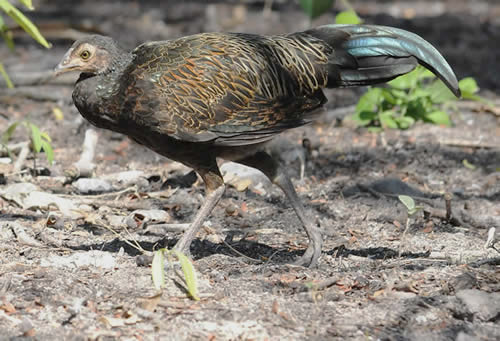
Brown Quail (Coturnix ypsilophora ) 2 flushed from tangle of vines on beach, LB.
PELICANIFORMES
Purple Heron (Ardea purpurea) 1 flying over open field, LB.
Pacific Reef Egret (Egretta sacra) 3 (ad., imm. -dark morph) a pair staying close on shore, LB (photo).
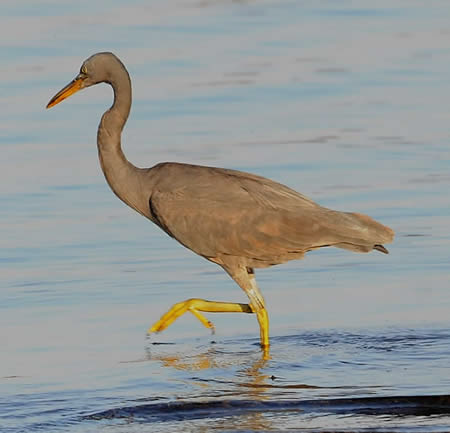
Javan Pond Heron (Ardeola speciosa) 12 wet pasture surrounded by scrubby second growth, LB.
Striated Heron (Butorides striatus) 1 flying low over shore, LB.
Little Black Cormorant (Phalacrocorax sulcirostris) 5 resting on sandbar, LB (photo).
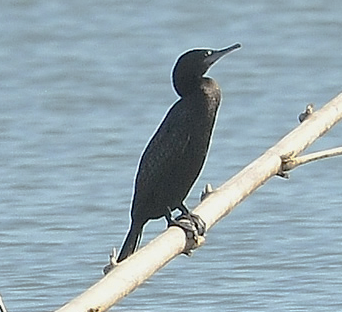
FALCONIFORMES
Spotted Kestrel (Falco moluccensis) 1 fem. vocal; chased by a Large-billed Crow; returning to nearby perches in tall trees, LB (photo).
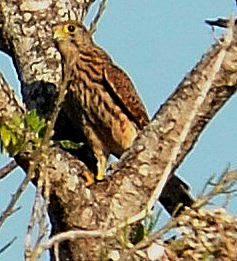
ACCIPITRIFORMES
Black Kite (Milvus migrans) 2 flying over pastures, LB.
Brahminy Kite (Heliastur indus) 1 flying over shore, LB; 1 flying back and forth over bay off Komodo Island – swooping down and taking a piece of fish from the surface, KI (photo).
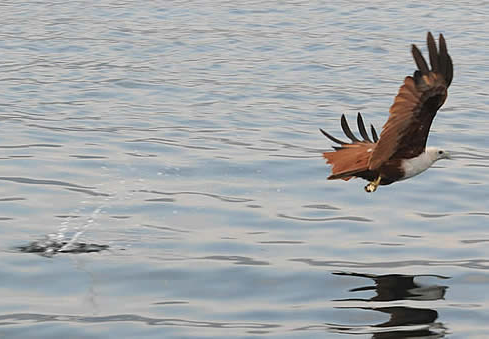
Brahminy Kite (Heliastur indus) Komodo Island Bay 25 June 2014
White-bellied Sea Eagle (Haliaeetus leucogaster) 1 snatching an unidentified small item from the surface, near shore, LB (photo).
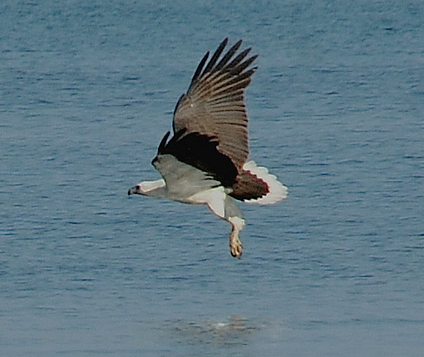
GRUIFORMES
White-breasted Waterhen (Amaurornis phoenicurus) 1 foraging on shore in mangrove, LB.
CHARADRIIFORMES
Greater Sand Plover (Charadrius leschenaulti) 1 (27 June only) on outer sandbar with a Whimbrel, LB (photo).
Whimbrel (Numenius phaeopus) 1 (27 & 28 June) on sandbar with GRSP; moved to inner shore, LB (photo).
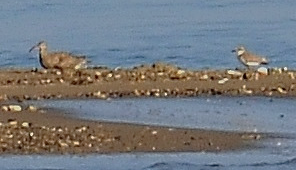
Black-naped Tern (Sterna sumatrana) 3 on rocky islets near shore, FS.
Greater Crested Tern (Sterna bergii) 10 foraging on surface schools of anchovy-like fish, FS.
COLUMBIFORMES
Spotted Dove (Streptopelia chinensis) ubiquitous in towns and villages.
Barred Dove (Geopelia mauqe) 20 feeding together on seeds provided by rangers, KI (photo).

Emerald Dove (Chalcophaps indica) 1 LB.
Green Imperial Pigeon (Ducula aenea) 2 in canopy of tall tree above the shore on a steep, forested hillside, LB.
Dark-backed Imperial Pigeon (Ducula lacernulata) 1 in fruiting tree next to a pasture, LB (photo).
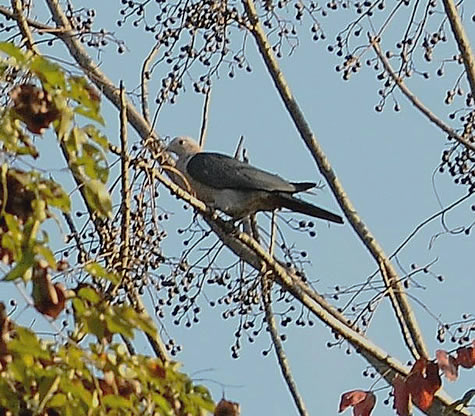
CUCULIFORMES
Asian Koel (Eudynamys scolopaceus) 2 (m,f) secretive; flushed from dense scrub by villagers, LB.
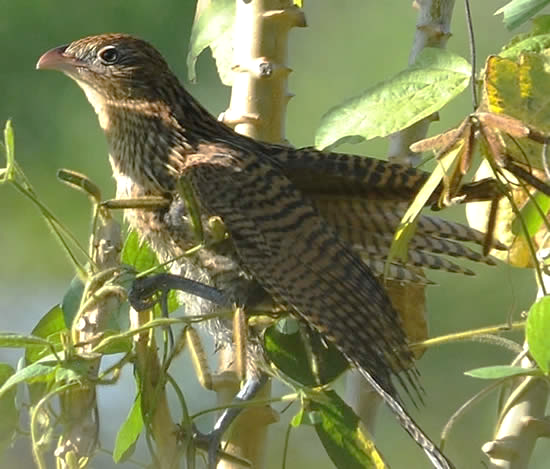
APODIFORMES
Glossy Swiftlet (Collocalia esculenta) 8 flying low over pastureland and mangrove, LB.
White-nest Swiftlet (Aerodromus fuciphagus ) ubiquitous; flying high above hillsides and open areas, LB.
CORACIIFORMES
Common Kingfisher (Alcedo atthis) 1 flying over shore in mangrove, LB.
Collared Kingfisher (Todiramphus chloris) 4 vocal and conspicuous, LB.
Sacred Kingfisher (Todiramphus sanctus) 2 perched in tall trees at edge of pasture and mangrove, LB.
Rainbow Bee-eater (Merops ornatus) 2 edge of village and pastures, LB.
Blue-tailed Bee-eater (Merops phillippinus) 1 flying over open scrub, LB.
PSITTACIFORMES
Yellow-crested Cockatoo (Cacatua sulphurea) 4 vocal, conspicuous in canopy, KI (photo).
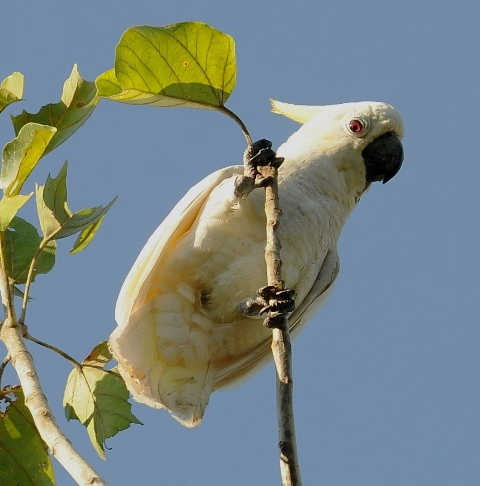
PASSERIFORMES
Brown Honeyeater (Lichmera indistincta ) 1 dense scrub and second-growth next to mangrove, LB (photo).
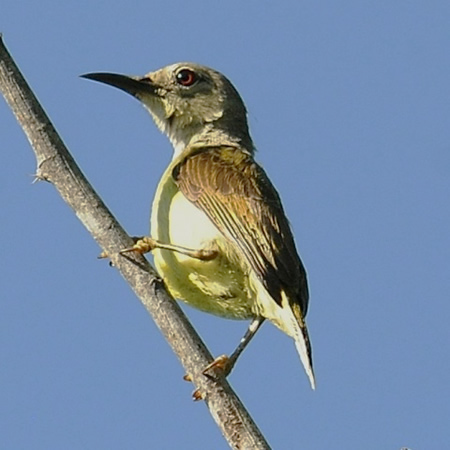
Black-naped Oriole (Oriolus chinensis) 2 in tall trees near the park headquarters, KI.

Helmeted Friarbird (Philemon buceroides) 1 foraging in subcanopy, KI (photo).
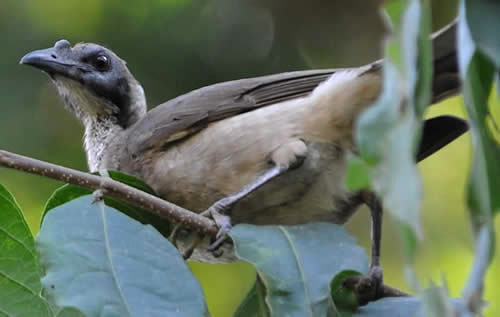
Wallacean Drongo (Dicrurus densus) 1 second-growth, edge of pastures,LB; shady woodland RI; 1 forest; gathering nest material KI (photo).
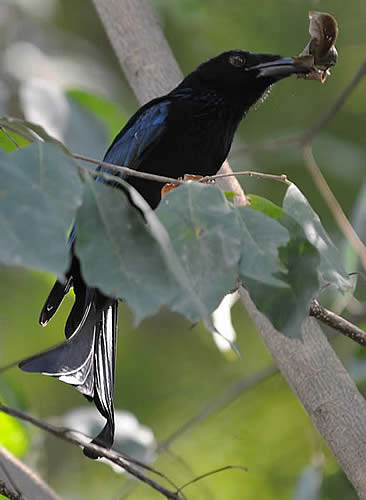
Black-naped Monarch (Hypothymis azurea) 2 bamboo thickets around Cermin Cave, LB; KI (photo).
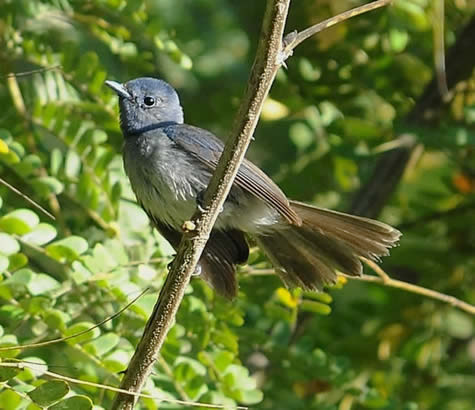
Asian Paradise Flycatcher (Tersiphone cinnamomea) 1 bamboo thickets and second-growth, Cermin Cave, LB.
Large-billed Crow (Corvus macrorhynchos) 4 vocal, LB; 8 gregarious,RI; KI (photo).
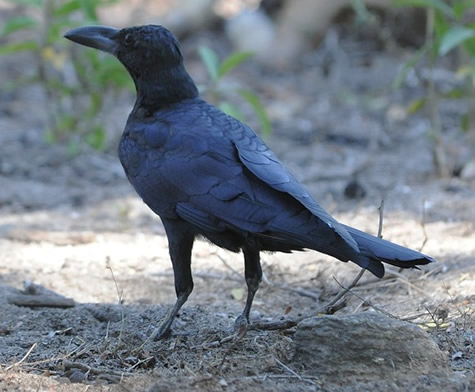
Common Golden Whistler (Pachycephala pectoralis) 2 vocal, active in mangrove, LB; KI.
Pacific Swallow (Hirundo tahitica) 2 flying over beach and pasture, LB.
Zitting Cisticola (Cisticola juncidis ) 2 shrubby second-growth and tall grass, LB.
Yellow-spectacled Heleia (Heleia wallacei) 15 ubiquitous in gardens and second-growth, LB; KI.
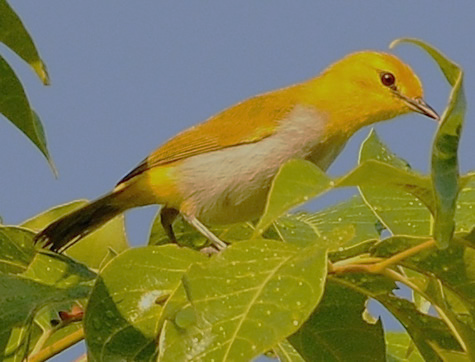
Pied Chat (Saxicola caprata) 2 vocal; active in gardens and open scrub, LB.
White-throated Gerygone (Gerygone olivacea ssp.) 10 (ad., imm.) ubiquitous; active at all levels in a variety of vegetation types, LB.
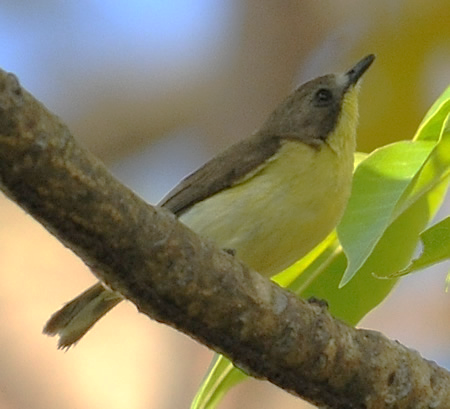
Garden Sunbird (Cinnyris jugularis) 10 m,f; vocal, active in gardens and second-growth, LB; KI.
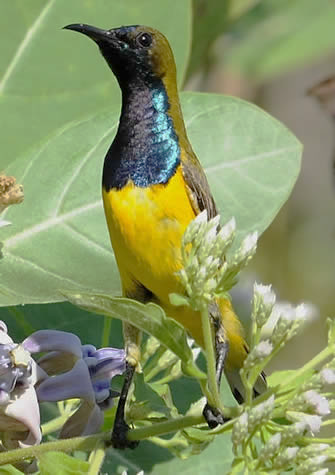
Flame-breasted Sunbird (Cinnyris solaris) 6 active in second-growth, LB; KI.
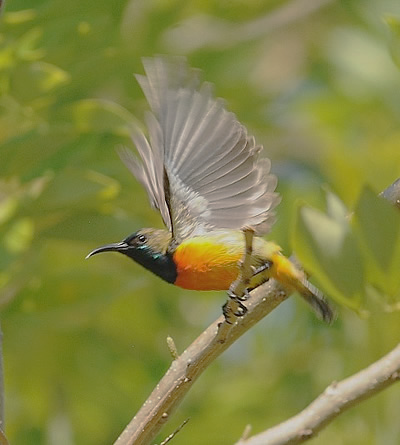
Eurasian Tree Sparrow (Passer montanus) 25 ubiquitous in villages, LB.
Scaly-breasted Munia (Lonchura punctulata ) 4 grassy areas, LB.
Zebra Finch (Taeniopygia guttata) 30 grassy areas and gardens, LB (photo).
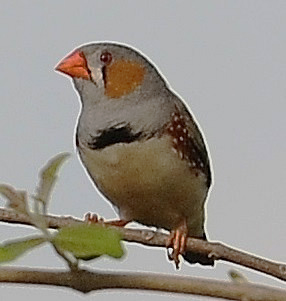
_________________________________________________________________